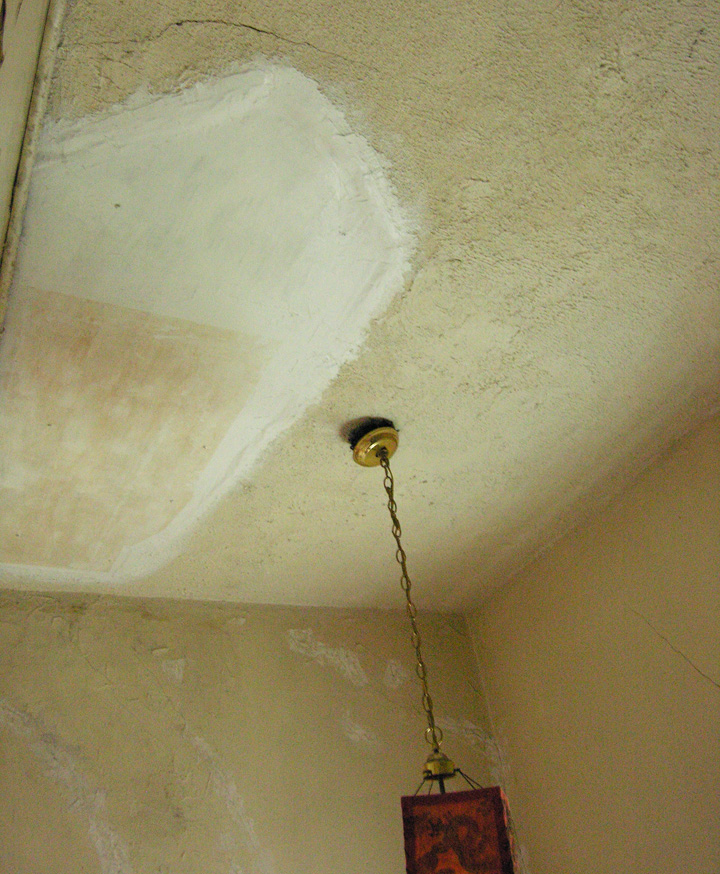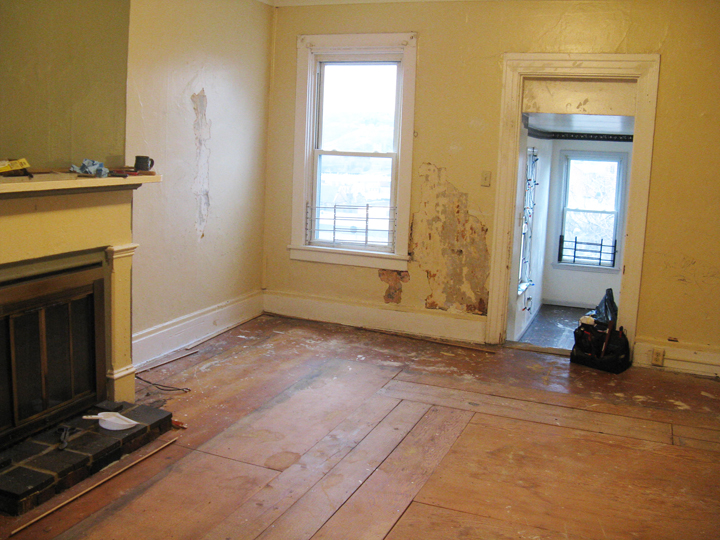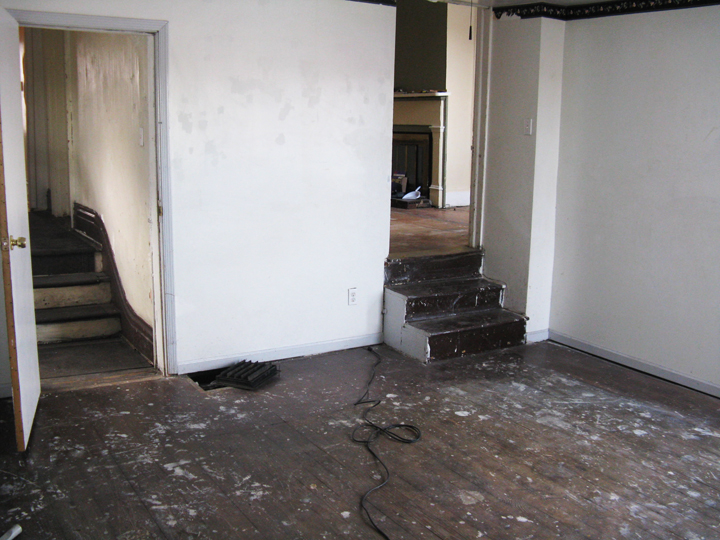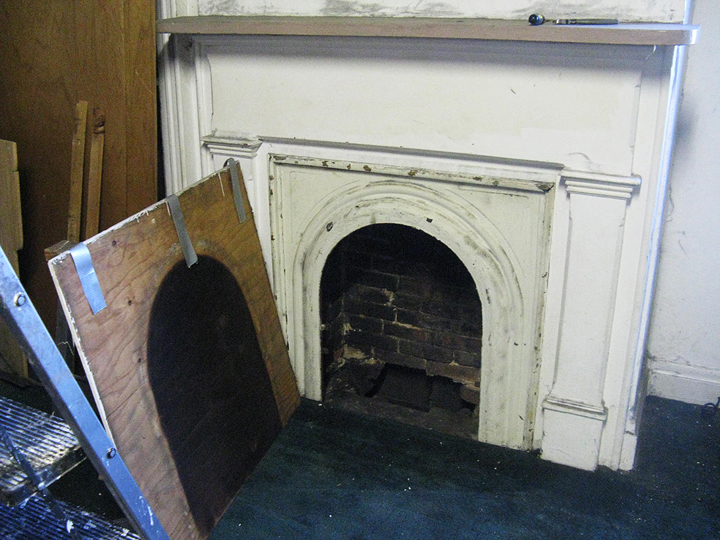This room was just finished last month. Mostly finished. There are a few more things to do, but my partner waited a long time for this — it’ll be his media room and library — and has already moved in. Now it’s full of stuff; furniture, boxes, stacks of books everywhere. He’s alphabetizing by author and doing stuff with cords and cables. Eventually there will be a rug, or rugs. It’ll be a while before it’s ready for another public viewing — or shoe moldings.
Until that day comes, this is the “after” photo. This was taken after the first coat of shellac on the floor and was my first look at the final effect of all the elements together. My initial thought was “wow, that is a lot of shiny brown stuff for one room”. The amber shellac darkened the floor even more than we expected. We knew it would get darker, but seeing it suddenly pop into view was another matter. It took some adjusting.
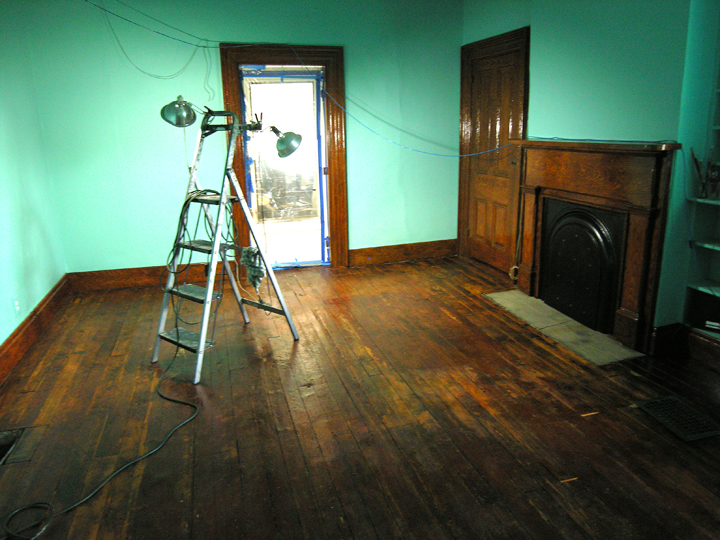
Here’s what we started with (these next two are the realtor’s photos). This would have been the dining room when the house was built. The front room, a parlor, is through the doorway ahead. The kitchen and the back of the house are behind you. On the left wall you can sort of see the lumpy seam where there was once a door to the hallway, closed up when the house was converted to apartments in the 1890s.


Simple and functional. I’ve lived in a few places that looked pretty much like this (minus the couch and the snake).
The room didn’t look that good again for six years, because the first thing we did in here was take down the drop ceiling. Most of the plaster was gone, leaving the wood lath strips and crumbly plaster dangles. Around the perimeter was a border of acoustic tile ceiling, with a bits of the original plaster under that.
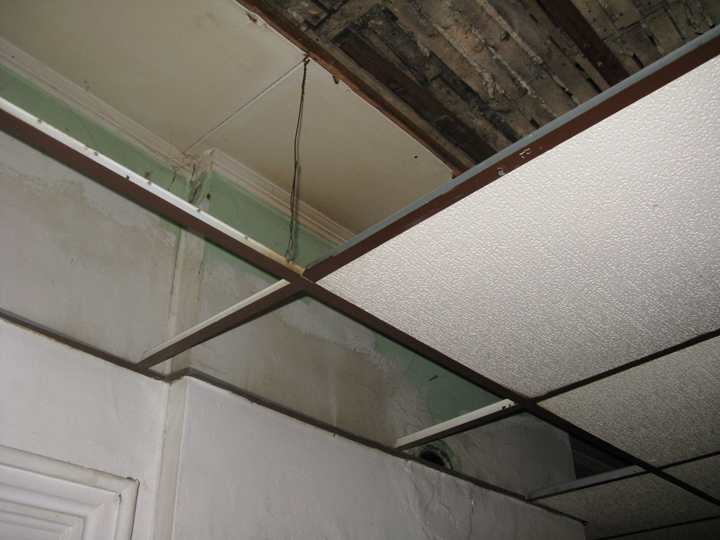

I get why people installed these ceilings, it was so much easier than fixing a ceiling and probably made the space warmer, but they make rooms feel awful. Now that you can see how high the ceiling was supposed to be the room looks horribly cramped under that grid.
This isn’t great, either.
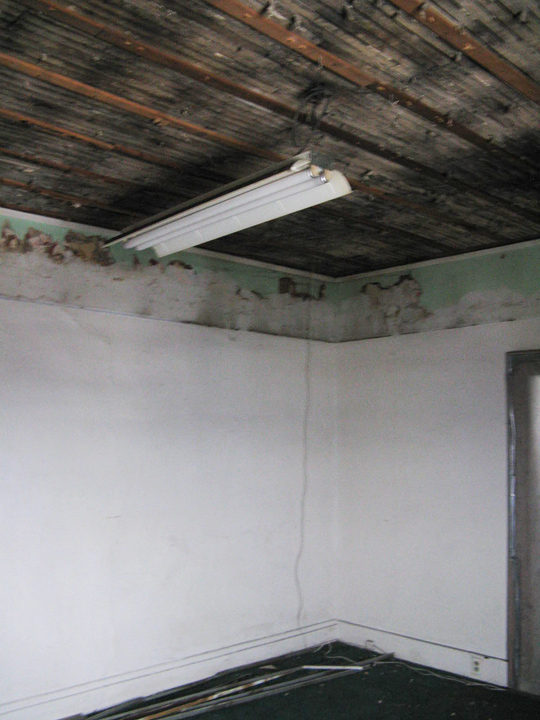
My usual inclination is to leave original material in place, but not here. On the upper face of the of the wooden lath strips was a quarter inch of black dust. Just touching them brought down clouds of fine powder. Even if the lath had been clean, putting drywall on top of such an uneven surface would be fussy and tedious. Removing the lath would allow us to put in sound insulation (my guy likes his movies at movie theater volume). We could also get electrical work done for this room and the one above it. It made sense to just to remove all the material down to the joists. My partner volunteered for this job.


These are a bit out of focus, but it really was cloudy and nasty in there.
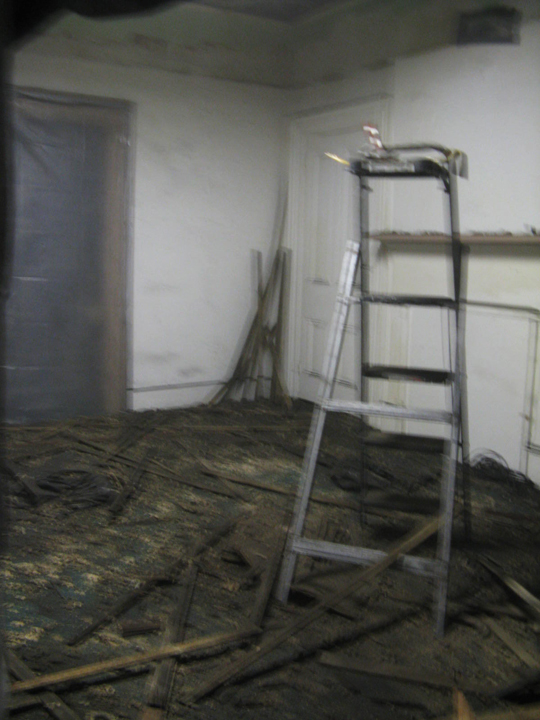
It looks very dramatic and awful but demo is actually fun.

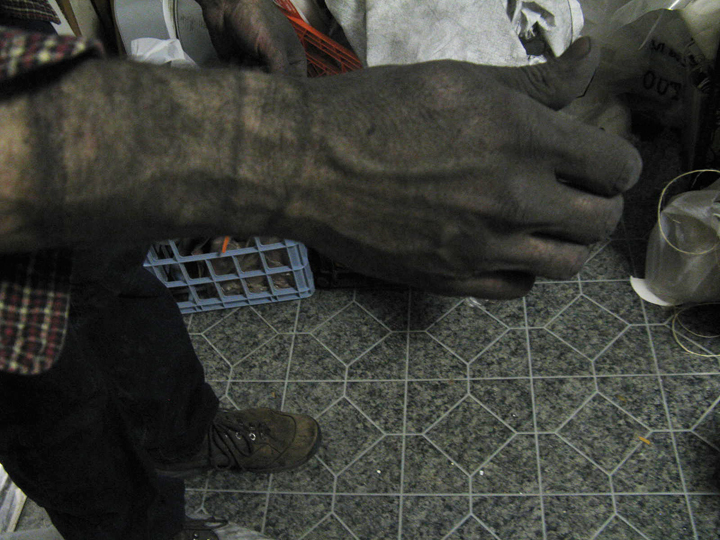
This is why so many houses around here have a shower in the basement. This was a working class neighborhood; many of the people worked in the mills or on the railroads nearby. A lot of people came home from work this dirty, every day. They would come in though the basement and get cleaned up before coming upstairs for dinner (and often a shot of whisky, so I’m told). Pittsburgh was this dirty, buildings were covered in soot and pollution.
Here’s something not so positive about Pittsburgh: the air quality here still isn’t the best. Like any thriving city there are a lot of cars and some polluting industry. They’re working on it. It’s a lot better than it used to be.
Inevitably, the pollution also found its way into buildings. In areas that remain undisturbed by rain or or renovations, it’s still there. In my attic crawlspace — facing the valley where the railroad is and the mills used to be — there are small drifts of it. See that soft gray stuff between the joists, that same color, dusting everything? It’s faintly sparkly, a little bit greasy and so fine that it gets into your pores — it takes a couple of showers to get it out.
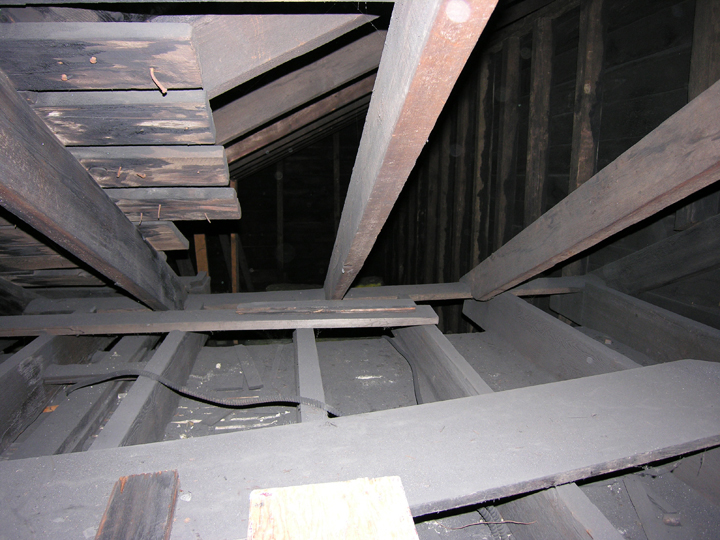
It’s quiet and still in there, which is good — under the right conditions, airborne coal dust is explosive. The dust in my attic is probably a mixture of coal dust, other pollutants and stuff that’s already been burned, in which case it’s just a slightly less scary problem.
Aside from fire concerns, coal dust at any level is a health hazard. Driving south from Pittsburgh and through West Virginia you see the law firm billboards advertising for mesothelioma patients. We weren’t going to get black lung disease from renovating the house, but according to the World Health Organization there is no safe level of coal dust exposure.
Getting every bit of the dust (The Dust) out would be impossible without entirely gutting the house, and I’m not doing that. Instead, we follow the protocols: wear protective clothing, gloves and a respirator. We collect the dust carefully, get it into bags which are carefully sealed and put into other bags which are also sealed, and get it out of the house. Then I vacuum a lot with a HEPA filter and if it’s a washable surface like paint or plaster, wash with TSP substitute. And then I wash it a couple times more with water.
That’s what we did in this room. After all the unwanted material had been cleared away, we vacuumed the joists and the underside of the second floor, then scrubbed the joists. Some time later I patched the holes in the ceiling, aka the underside of the second floor. When upstairs you could see into this room, which we got used to pretty quickly but seemed to unnerve our guests.

And … then we left it like this for a good long time. There was so much other stuff to do, and the idea of putting in a ceiling was too overwhelming.

Next: walls, a window and a ceiling.
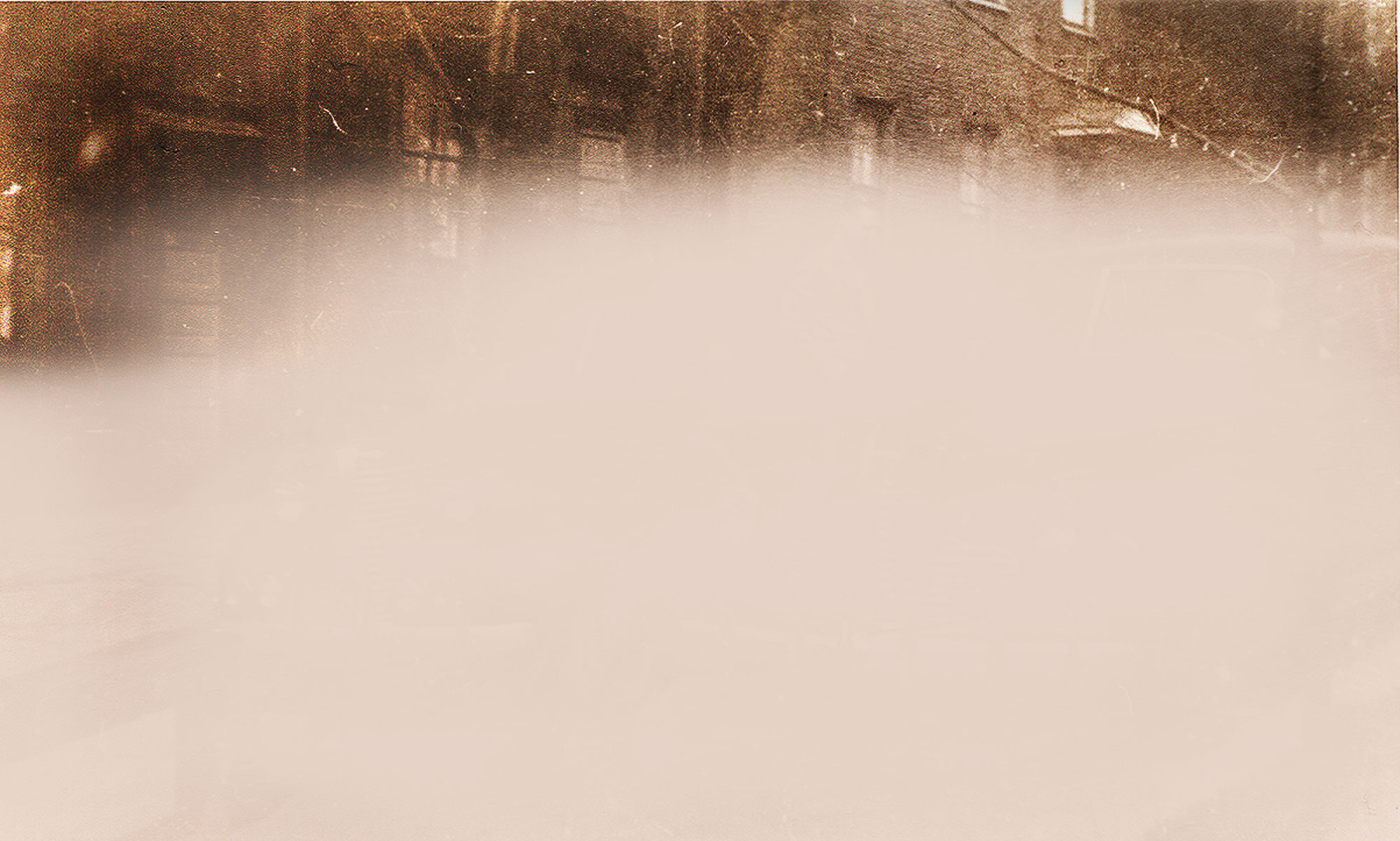
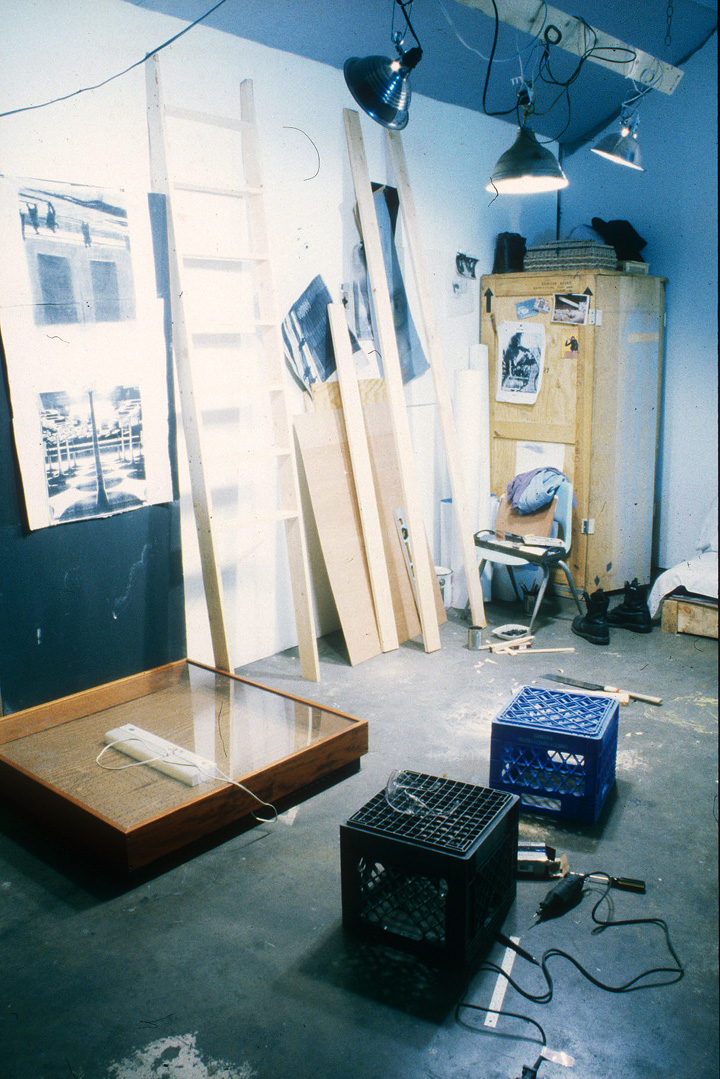

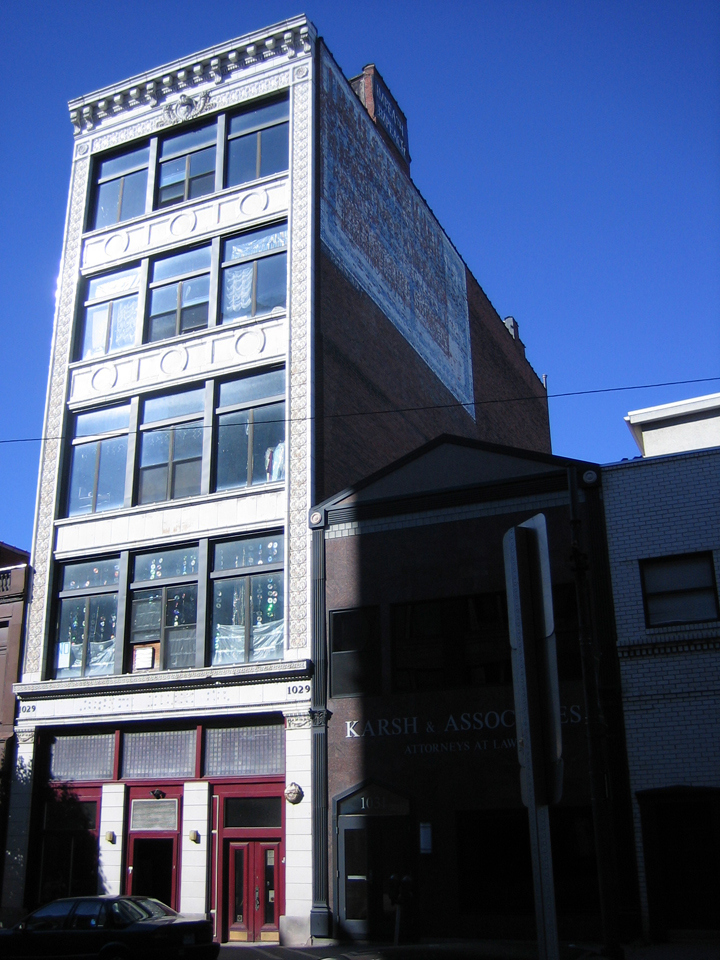
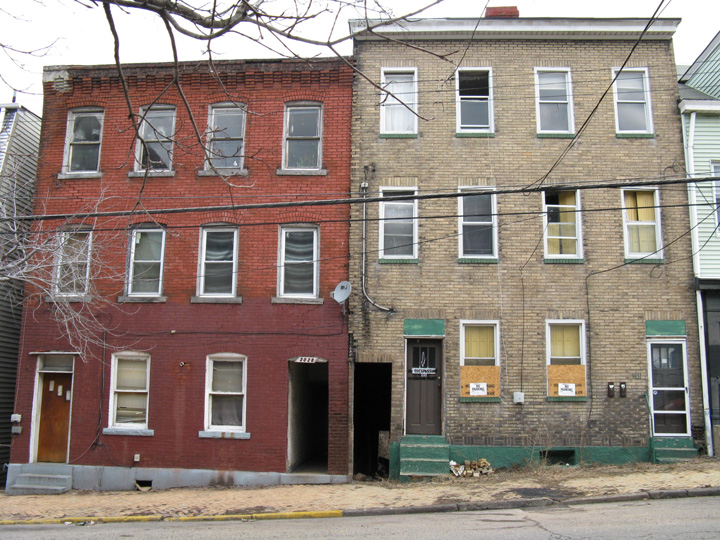 (I lived in the one on the left, not the vacant one)
(I lived in the one on the left, not the vacant one)

